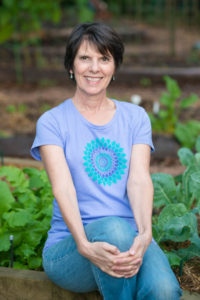Still Sizzling in September Vegetable Garden
Central Texas is known for parched, sizzling summers but what a difference the unexpected and well-timed rains made in our gardens and rain barrels in June and July. Peppers, cucumbers and tomatoes, especially cherries, produced longer than usual, okra flourished and even Austin’s hiking trials are verdant and dense. It’s hard to imagine that earlier this year Texas was was hammered by a record-breaking deep freeze.
Vegetable gardeners welcome the arrival of September because it means that cool weather is on the way. Though the days are still hot at some point this month we will start to see a gradual shift in the nighttime temperature and that minor change will take a little heat stress off of plants and make gardening a more pleasurable endeavor.
September Vegetable Garden Checklist:
Water
- Frequent watering is important for new transplants during the first few weeks as they put down roots. If rains don’t come in September plants will depend on you for water. Dry conditions in a vegetable garden can lead to delayed maturity, low yields and poor quality.
- When planting seeds water the soil before planting, then keep it moist until the seeds have germinated.
- Avoid watering in the middle of the day because water can be lost to evaporation.
- Most vegetables have a growth stage when water is most critical: during head development for broccoli and cauliflower; during flowering and pod enlargement for beans and peas and during root enlargement for radishes, beets and carrots. Lettuce and other leafy vegetables do best with a fairly consistent supply of moisture from planting to harvest.
Soil/Mulch
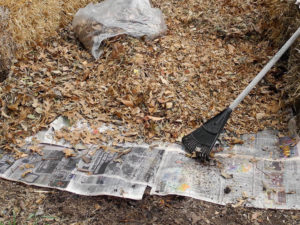
Use newspapers and mulch to protect soil and suppress weeds.
- Keep soil covered to conserve moisture, moderate temperature and deter weeds. One low-cost way to protect soil is to spread a few layers of newspaper over the soil, wet it down, and top with dried leaves, grass clippings or shredded mulch. This method can be used over fallow ground or around the perimeter of vegetables. Place drip or soaker hoses underneath the leaves, grass or mulch.
Fertilize
- Sidedress vegetable transplants 3-4 weeks after planting. To sidedress, pull back mulch, sprinkle 2 tablespoons of fertilizer around the perimeter of the plant (vegetable or turf fertilizer works fine here), scratch it lightly into the soil, water well and replace mulch. Repeat this application of fertilizer again 3 weeks later to maintain healthy and vigorous growth.
Plant/Transplant
- If transplants have been grown indoors or in a greenhouse it’s a good idea to acclimate them to outdoor conditions before planting in the garden. Start by setting them in a shady spot for a few hours, gradually exposing them to more sun each day over the course of a week.
- The best time for setting out transplants is in the evening or on a cloudy day; if it rains just after you plant that’s even better.
- Use transplants for broccoli, cauliflower, cabbage and Brussels sprouts.
- Plant kale and collards later in the month after temperatures have cooled off slightly. They grow easily from seed but can also go into the garden as transplants for a quicker harvest.
- Plant seed of root crops – beets, carrots, turnips and radishes – directly in the ground because they do not like their roots disturbed.
-
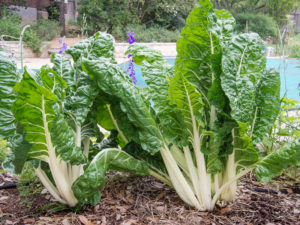
Swiss chard varieties with white stems, such as ‘Fordhook’ and ‘Silverado’, are more cold-hardy than chards with colored stems.
Swiss chard is both beautiful and tasty and makes an excellent container plant. Plant it from seed or transplants this month. Harvest the small tender leaves for salads, sandwiches and wraps; slice larger leaves into ribbons and add to omelets, soups and casseroles.
-
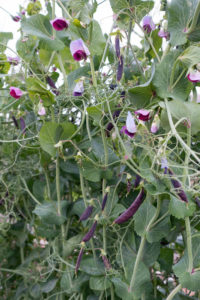
‘Sugar Magnolia’ is a climbing variety of sugar snap pea with beautiful purple pods.
Sugar snap peas and snow peas are a real garden treat. The best time to plant is mid to late September. ‘Super Sugar Snap’, ‘Amish Snap’ and ‘Sugar Magnolia’ are tall vining varieties that grow well on a fence or trellis. ‘Snak Hero’ is an All-America Selections winner from 2020. It produces slender, edible pods on two-foot vines.
- Grow some herbs for fragrance and flavor. They can be incorporated into the landscape or vegetable garden and they also make great container plants. Good options for fall planting include dill, fennel, sorrel, chives, cilantro and parsley.
Diseases/Pests
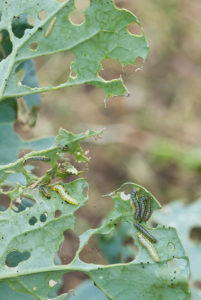
Tiny but hungry cross-striped caterpillars bring insatiable appetites to the garden.
- Fall armyworms, cabbage worms, cabbage loopers and cross-striped cabbage worms can be an issue this time of year, especially on cole crops like broccoli, kale and cauliflower. Cover new plantings with row cover to exclude the moth that lays the eggs or treat plants with a product containing Bacillus thuriengensis (Bt), which comes in either dust or spray form. Bt is deadly when consumed by caterpillars but does not harm other insects. Read the label and follow directions carefully.
Harvest
- Use clippers to harvest peppers; the stems are brittle and can break easily.
- Continue to harvest warm season greens such as Malabar spinach, amaranth, purslane. Add the young and tender leaves to salads, sandwiches and wraps or sauté them with corn, peppers, squash, okra or other fresh vegetables.
- Harvest blooms and leaves of garlic chives and add to stir-fry dishes or sautéed vegetables.
Tips
- Try new recipes or preparation methods for your garden produce. Magazines, cookbooks, food blogs and other websites offer fresh ideas and pretty pictures for inspiration.
Additional Resources
Watch the Vegetable Gardening in Central Texas Webinar
Recommended Vegetable Varieties for Travis County
Plant Rotations, Successions and Intercropping
Sustainable Food Center Farmers Markets
Monthly Gardening Calendar for Austin and Central Texas
